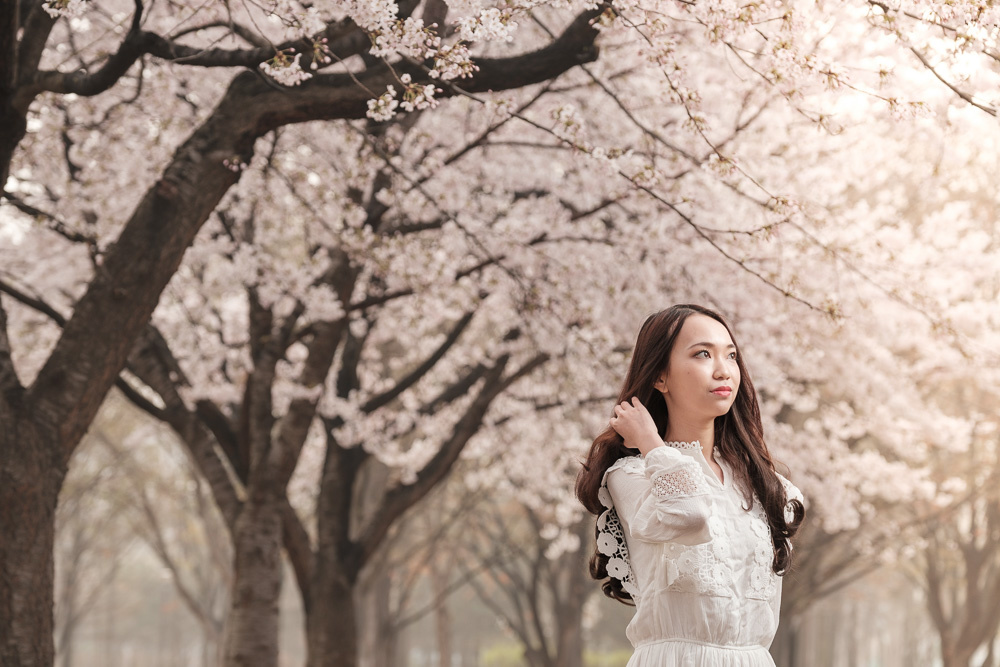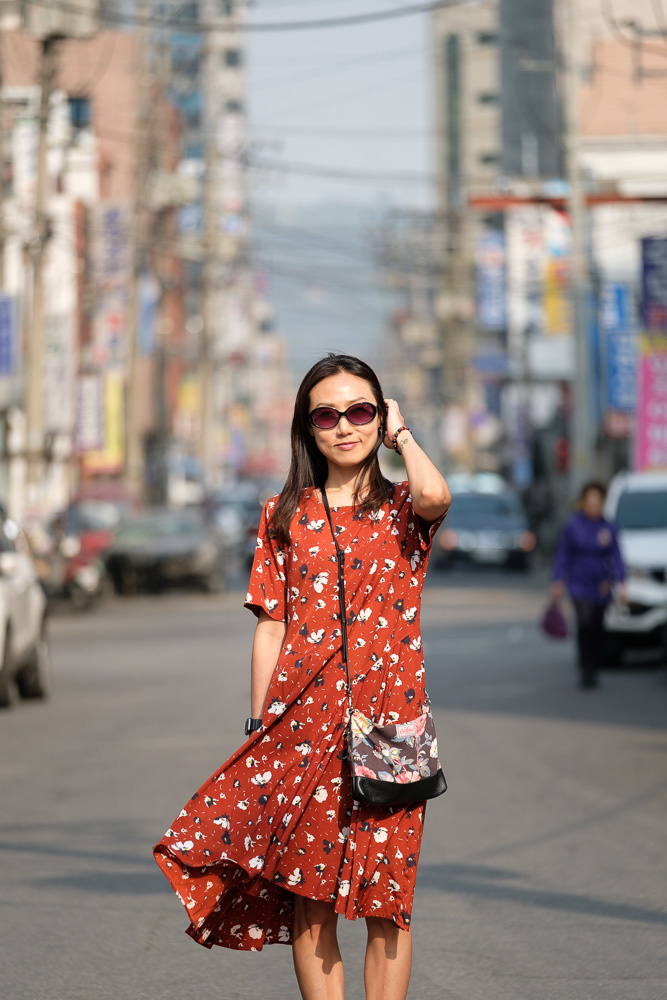Let us take a moment of silence to respect the venerable 70-200mm lenses in our midst. The workhorses that they are have kept many a working professional with their rent happily paid, and many a serious amateur smiling at their results. The collection of several useful focal lengths, 85mm, 135mm, and 200mm, plus everything in between and a fast aperture of f/2.8 has made it the go-to lens for many. Up until recently, it was all but missing from the Fujifilm X System lens lineup as Fuji focused on creating spectacular primes one after another. But, Fujifilm rectified that with their announcement of the XF 50-140mm R LM OIS WR lens in September of 2014.
We’re all quite familiar with the 70-200mm lens and its varied uses, so let’s dive right into taking a look at Fujifilm’s offering in this class.
Build Quality and Handling
I've said it before and I'll say it again: it's a Fuji. The construction of this lens is second-to-none. It is a solid unit and nothing feels out of place. The full-metal construction feels on par with Fujifilm's best primes, and the WR (Weather Resistance) denomination means we need not worry about some inclement weather. Indeed, in my testing, it has been through sub-zero temperatures, yellow dust blowing over Seoul, and plenty of rain to boot. So far, so good.
The lens weighs in at 995 grams, which is around two-thirds that of the Nikon or Canon equivalents. It is also significantly smaller, measuring 176mm in length as the filter thread is only 72mm, the lens barrel feels significantly narrower than the larger lenses as well. The size and weight were some of my biggest worries when I began considering this lens, but after holding it I felt all that slip away. It feels much lighter than the larger lenses for full-frame 35mm sensors, and fits snuggly in the corner of a small bag where the larger lenses would not.
The zoom ring is well dampened and makes it easy to find the focal length you’re looking for. There is quite a bit of tension, which I feel suits this lens; it makes for precise movements. At just under 90 degrees the throw is short enough that moving through the zoom range is quick as well.
The tripod collar is also an interesting feature on this lens. As with all large, heavy lenses, the 50-140mm has a tripod collar to stop unnecessary stress on the lens mount and place the tripod mount closer to the center of balance of the combination. Fujifilm chose to make the collar permanently attached but allow the foot to be removed from the lens. The collar itself has a lock to allow it to spin freely, and the foot is locked to the collar by two screws of its own. I personally like this design, because when I reach for the aperture ring, my fingers don’t catch on a divot where the collar used to be when it's not attached.
One final thing of note is the hood. As with most of Fuji’s hoods to date, it is made from plastic. However, it does have one interesting feature. There is a small tab that detaches, allowing you to turn filters like a CPL without actually removing the hood itself. For those who use filters a lot, this could be an excellent addition.
Optical Image Stabilization
This is Fujifilm's OS, VR, or IS. Whatever you want to call it, it can be a life saver in low-light situations, and many rely on it. So, how well does it work? Fujifilm claims five stops of stabilization. How do they measure that? Well, that's anyone's guess. Here's the truth: it works. It works really well. At the 50mm end, I'm happy to handhold to 1/4 of a second if my subjects are not moving, and at the 140mm end, down to about 1/20 s or so. I'm sure those of you with steady hands will be able to do much better, but I'm keeping this thing at 1/500 s when not using the stabilizer. That to me is a marked improvement. It allows me to shoot at lower ISO values as light fades, which is always a bonus, especially on a smaller sensor.
Image Quality
Sharpness
It's sharp. Really sharp. If you're looking for detail, you're going to get it. Throughout the zoom range, I really haven't noticed any times that I would want for more sharpness.
When compared to the primes in Fuji's lineup, you'll likely see a little more detail at the same apertures, but not enough to really worry about. In my comparisons, the 50mm and 90mm f/2 lenses perform slightly better than the 50-140 at the same focal lengths, but in everyday shooting, it's really not enough to worry about.
Flare and Chromatic Aberrations
Thanks to Fujifilm's in-body lens corrections and excellent glass, you'll see very little in terms of chromatic aberrations with this lens. Fringing is almost non-existent, and with the hood attached, flare is well controlled.
I have had a couple of interesting flares during my time using this lens, one of which is below. The great thing about using a mirrorless camera is that the flare you see in the viewfinder is exactly what you're going to get when you take the shot. As I saw this flare occur, I quickly gravitated towards making it happen for a few frames. If you're not a flare-lover, that EVF will save you from all these “imperfections.”

The Bokeh
This, of course, is what is on everyone's mind with a lens like this; How is the bokeh? While it's not out of this world, it's not distracting either. It is what it is. I have included a few different shots for you to judge how you feel about it for yourself. But, here are my thoughts.
For the most part, you don't even notice it. That's a great thing. I've found that with natural backgrounds and back-lit scenes it tends to do very well. At f/2.8, it renders things very pleasantly. For those used to an f/2.8 lens on a full-frame 35mm sensor, you will notice that this lens, being the equivalent of an f/4 on that sensor size, does not completely obliterate backgrounds or provide for that razor-thin depth of field at longer focus distances. It still does a great job, however.
The couple of times I noticed that the rendering was unpleasant were around city scenes, and only sometimes. Wires, sharp edges, and other man-made features tended to have a very defined nature to the blur. This I found unpleasant, but with a small change in focal length, I was able to alter the feeling of the bokeh.
Even though Fujifilm users have a reduced ability to create extremely narrow depth of field due to sensor size, this lens offers a close focusing distance of 1 meter to compensate somewhat for that. At its minimum focus distance, extremely narrow depth of field is still possible. Even for a full-length portrait, full body isolation is still possible.
Focusing
Focusing is swift and silent thanks to the Triple Linear Autofocus Motor inside the lens. It does a fantastic job of moving all that glass around in such a tiny package.
On the X-Trans III bodies like the X-Pro2, X-T2, and X-T20, the lens focuses extremely quickly in good light, and tracks moving subjects without missing a beat. It is every bit the workhorse that its larger counterparts are. In very low contrast or back-lit situations, the focusing gets slower. This is minor for the most part, and although I had some difficulties in the beginning, once you understand how the lens focuses, it is easy to get quick focus even in the lowest of light.
On an older sensor like the X-Trans II, it is a slightly different story. The focus is nowhere near as snappy. Although still perfectly usable, it's not in the same league as when using it on an X-Trans III body.
By virtue of being a mirrorless camera, you're focusing using PDAF sensors on the imaging sensor itself, so there is very little room for focus error. As such, the lens focuses accurately all the time. No worries about missing focus to be had with this lens.
In Use
This is where I feel we should really make our decisions on lenses. Sharpness, bokeh, handling, and build on most modern lenses from any reputable manufacturer are good enough for just about every photographer. The big questions are about how you will use it, and more importantly, if you will use it. As a former owner of a Sigma 70-200mm f/2.8 and a Nikkor 70-200mm f/2.8, I can say that “if” is certainly a big question. Let me explain.
Full-frame 70-200mm lenses are big and heavy. They are beautiful and versatile, but tough to carry around all day. I found myself enjoying both lenses that I owned for a few weeks, and then they stopped leaving the house with me. I could get most of what I needed from a couple of lightweight primes, and they fit into a smaller bag. When I went to buy the 50-140mm f/2.8, I “ummed” and “ahhed” for months before finally picking one up.
It comes with me now, even after months of owning it. That says a lot. I got into the Fujifilm system in the beginning because of its size, and even the pro-level zoom lenses are just that much smaller and lighter.
The lens has become a workhorse for me. I use it mostly when I need the quick versatility of multiple lenses. When shooting corporate events or proposal candids, this is the lens I have on. It does a great job, and produces great images every time. However, if I have the time to work a little more slowly, or am traveling, this is still far too much lens for my needs, and the primes will be coming with me.
What I Liked
- Useful zoom range
- Fast and accurate focus
- Size and weight significantly lower than full-frame equivalents
- Finally a 70-200mm equivalent that I will take with me every day
- Excellent Image Stabilization
- Pro-grade build
What I Didn’t Like
- Bokeh can sometimes be distracting
- Still big for the Fujifilm system (would love to see an f/4 version)
In Conclusion
If you’re looking for an extremely versatile tele-zoom for the Fujifilm system, there is really only one option (I don’t count the 100-400 as “extremely versatile”) and this is it. As with all Fujifilm XF lenses, there is no question of its quality and as I have iterated above, this is a fine example of Fujifilm's ever-growing lens collection. If you’re on the fence about size and weight, drop by your local store and be prepared for a pleasant surprise. But those should really be your only concerns, this is a fine lens and deserves a place in your bag. Get yours here.












bokeh image, tons of room over the head and then cut off the feet at the calf...
it's bad photography when photographing a person.
Depends on the goal. For editorial purposes, I have lots of clients wanting lots of headspace for things like cover shots, copy, etc. This isn't necessarily a bad shot at all. And cutting at the calves is better than cutting at joints (knees, ankles, etc.).
Thank you for the great review, Dylan! Given the design of the tripod collar, or foot in this case, would you be confident in using this lens with a Blackrapid strap attached to the tripod collar? The solid ring type collars on Canon/Nikon lenses make it seemingly strong enough to dangle off of a Blackrapid, but would you say the same for the Fuji 50-140 collar?
Aobsolutely. There are two screws that are 30 degrees apart and screw deep into the collar. I can't see it coming loose any time soon.
Bro. That cherry blossom tree photo. That shot is unreal.
Cheers, bro. That was the last vestiges of cherry blossom season. The rain knocked them all off the next morning.
I really enjoyed this report and your insights on size, weight and usability were important as I am about to teeter in favour of this lens I feel. I am just about to sell all my Leica kit including my M10 as I don't feel I merit it. A tad akin to epensive Hi-Fi, there is a diminishing set of returns once an established benchmark quality has been reached. So for one 35mm summicron I have bought the x-pro 2 and a fast 50mm equivalent. They are very, very good. One body and five lenses to go to market now! I am keeping an MP, because analogue is important to me too. Your photos are great and I am glad you ignore those who carp ;-). Des